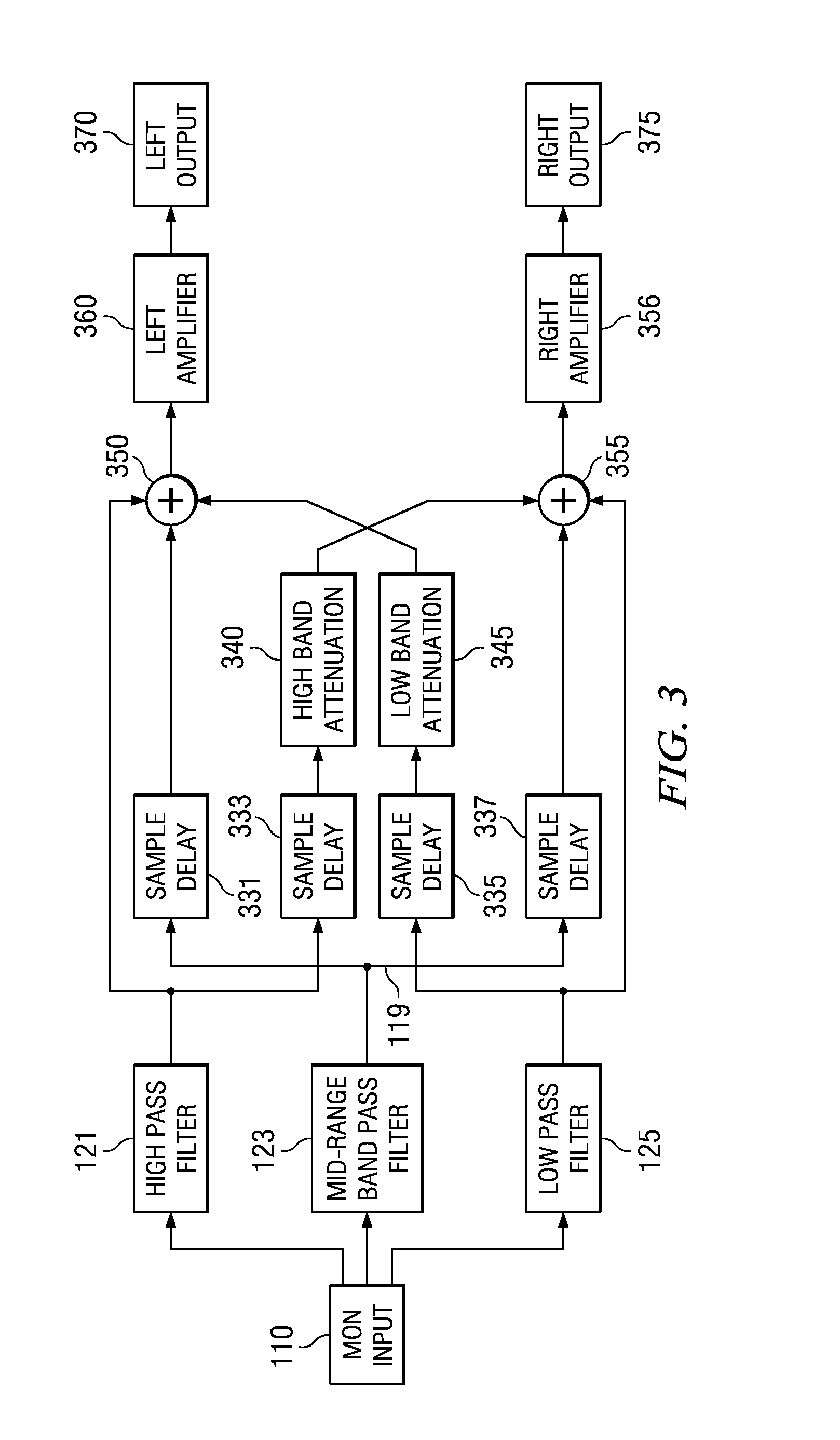Low Computation Mono to Stereo Conversion Using Intra-Aural Differences
- Summary
- Abstract
- Description
- Claims
- Application Information
AI Technical Summary
Benefits of technology
Problems solved by technology
Method used
Image
Examples
embodiment 100
[0014]FIG. 1 illustrates a basic embodiment 100 of this invention in block diagram form. The input mono signal 110 is sampled at 44.1 KHz. Thus the Nyquist frequency was 22.05 KHz. For the experiment described below, input mono signal 110 was a produced by mixing the left and right channels of a stereo recording of a rock tune.
[0015]Input mono signal 110 is supplied to high-pass filter 121, mid-range band pass filter 123 and low-pass filter 125. For this experiment filters 121, 123 and 125 were embodied by 1025 tap linear phase finite impulse response (FIR) filters. Shorter, simpler infinite impulse response (IIR) filters could be used to minimize the computational cost.
[0016]Left channel 130 and right channel 135 result from summation of various delayed and undelayed signals from filters 121, 123 and 125. Left channel 130 receives an undelayed signal from high-pass filter 121. Right channel 135 receives the signal from high-pass filter 121 delayed by 60 samples, or 0.00136 seconds ...
second embodiment
[0018]If producing a realistic stereo effect is more important than approximating the original mono signal, then another technique can be used. This second embodiment adds an attenuation term the high-pass signal to the right ear to approximate the intra-aural intensity difference (IID) due to the head's attenuation of sounds from the opposite side. Likewise an attenuation term can be applied to the low-pass signal to the left ear. This attenuation is not as important since the head tends to attenuate higher frequencies more than lower ones. A simple attenuation term is the least computationally expensive, however a low-pass filter could be included to further enhance the simulated attenuation due to the head. This takes advantage of the fact that the head attenuates lower frequencies less than higher frequencies. Such a low-pass filter could be very gentle and thus could be computationally very simple.
[0019]FIG. 2 illustrates the magnitude response of the right channel according to...
PUM
 Login to View More
Login to View More Abstract
Description
Claims
Application Information
 Login to View More
Login to View More - R&D
- Intellectual Property
- Life Sciences
- Materials
- Tech Scout
- Unparalleled Data Quality
- Higher Quality Content
- 60% Fewer Hallucinations
Browse by: Latest US Patents, China's latest patents, Technical Efficacy Thesaurus, Application Domain, Technology Topic, Popular Technical Reports.
© 2025 PatSnap. All rights reserved.Legal|Privacy policy|Modern Slavery Act Transparency Statement|Sitemap|About US| Contact US: help@patsnap.com



